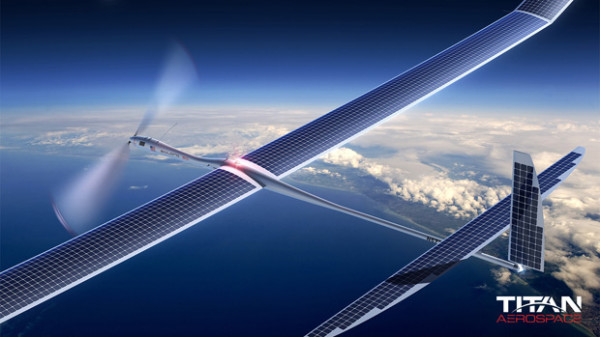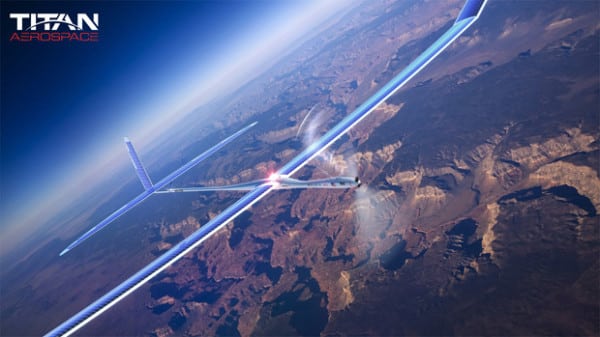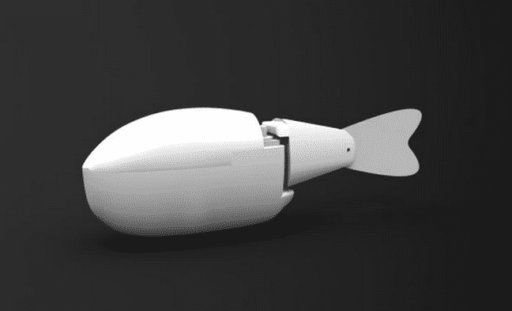Earlier we have seen solar-powered unmanned aerial vehicle (UAV) Silent Falcon that is said to be capable of flying up to 14 hours in the sky at a time. But lately, Titan Aerospace has announced that it is making such solar-powered UAVs that would be able to fly in the upper atmosphere for 5 years at a time!
Titan Aerospace is making two solar-powered UAVs: Solara 50 and Solara 60. The Solara 50 weighs just 159 kg (350 lb) and it will have a 50-meter (164-foot) wingspan, a length of 15.5 meters (54 feet). This UAV will offer a payload capacity of over 32 kg (70 lb). On the other side, Solara 60 is larger than Solar 50. It will be 60 meters (197 feet) across, with the ability to carry up to 100 kg (250 lb).
The Solara’s cruising speed will be about 104 km/h (65 mph), and it will have an operating range of over 4.5 million kilometers (about 2.8 million miles). Titan has pointed out that one of the aircraft could provide cell phone coverage for an area of over 6,500 square miles (16,800 sq km), offering the reach of over 100 ground-based towers. However, on either version ( Solara 50 and Solara 60), the upper wing and tail surfaces of the plane will be covered in approximately 3,000 solar cells. These solar cells will allow to generate up to seven kilowatts of power during the day. But at the cruising altitude of 20 km (65,000 feet), the aircraft will be above the clouds and unaffected by weather disturbances. However, hundreds of watts of that power will be stored in its onboard lithium-ion batteries, to keep its motor, autopilot, sensors and telemetry systems running throughout the night.
These UAVs are being made to serve as an “atmospheric satellite.” Now the creators believe that most of the aircraft’s uses will likely involve it flying in circles over a given area including surveillance, asset tracking, live mapping, or the monitoring of crops, weather, disaster sites, or pretty much anything else.
The company has already flown smaller prototypes as a test and hopes to have the full-sized Solara 50 and Solara 60 available with a year. There’s currently no word on price, but you can see some pretty animation of one flying in the video below.
http://www.youtube.com/watch?v=If8MODnvjhw
Source: Titan Aerospace
Thanks To: IEEE Spectrum
[ttjad keyword=”solar-device”]




